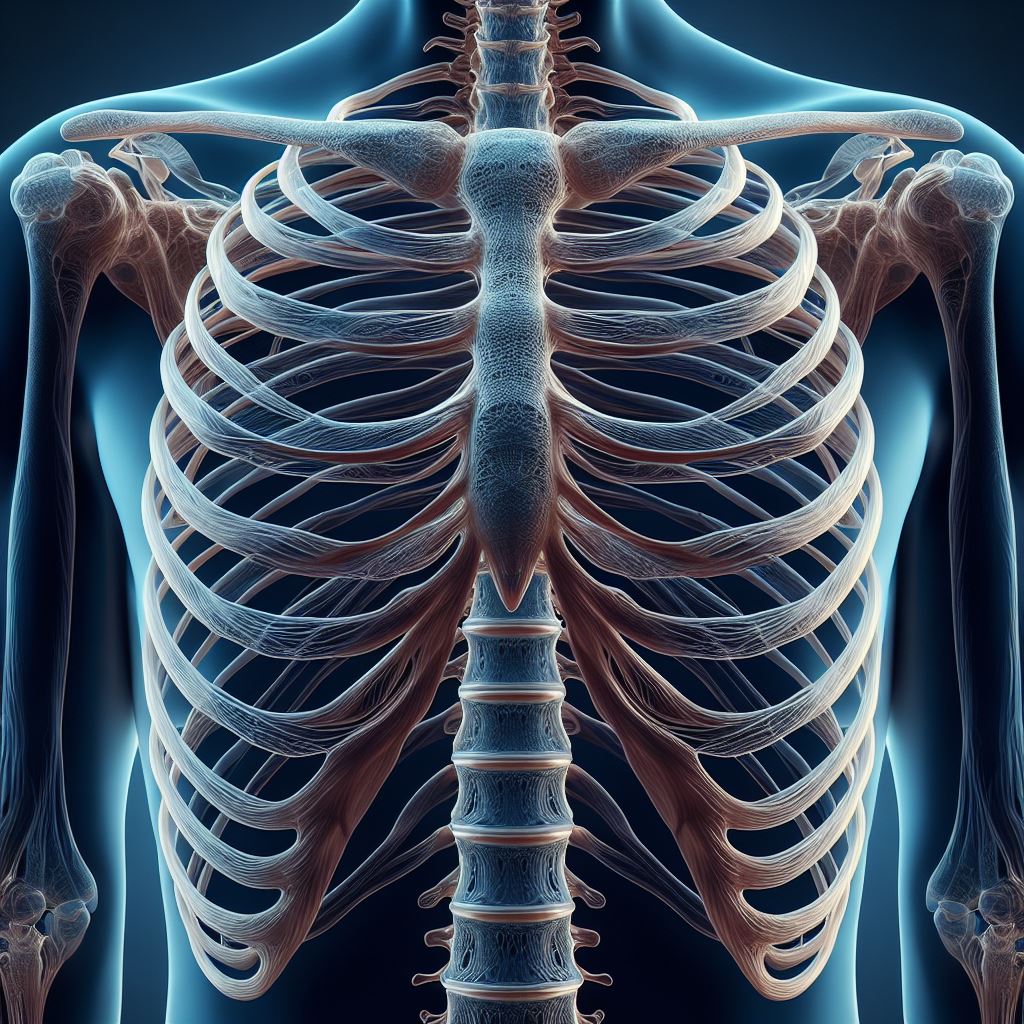Costochondritis: pain and inflammation
Costochondritis is inflammation of the area where the ribs attach to the cartilage attached to the sternum (breastbone). Costochondritis causes chest pain, especially when the area is touched. It is a benign condition that often resolves on its own without treatment. Chest pain caused by costochondritis must be differentiated from pain from more serious conditions including heart attack, pericarditis, and other conditions. Costochondritis is a common cause of chest pain in children and teens.
What causes costochondritis?
Costochondritis is caused by inflammation. Most of the time, the exact underlying cause is unknown. Viral and bacterial infections may lead to costochondritis. The condition may also occur in cases of thoracic trauma, overuse injury, fibromyalgia, reactive arthritis, and in the presence of tumors. Costochondritis may develop after surgery. Pregnancy lengthens a woman's rib cage and may lead to costochondritis.
What are the symptoms of costochondritis?
The main symptom of costochondritis is chest pain of varying severity. The pain may be perceived as pressing, sharp, or aching. Movement, effort, and deep breathing worsen symptoms. Many people with this condition report a recent illness accompanied by coughing or physically exerting themselves. Symptoms are most often reported in the second to fifth costochondral joints, although either rib may be involved. The pain tends to be in one place, but it may be located in multiple areas.
Costochondritis versus Tietze syndrome
Tietze syndrome, like costochondritis, is an inflammatory condition that causes pain in the junction between the ribs and cartilage. The pain may come on suddenly or gradually. The pain may spread to the arms or shoulders and tends to worsen with sneezing, coughing, or physical activity. Tietze syndrome differs from costochondritis in that chest pain is also accompanied by swelling. The pain associated with the condition often goes away on its own without treatment within weeks to months, but swelling may persist.

How is costochondritis diagnosed?
The diagnosis of costochondritis is based on the patient's history and physical examination. Imaging tests and blood work may help rule out other potential, more serious causes of chest pain. Chest X-rays may be used to evaluate pneumonia and tumors. Patients with a suspected heart condition may undergo an electrocardiogram (EKG). The doctor may order a blood test if there is a fever and other signs of infection.
Costochondritis pain may be responsive to home treatments such as over-the-counter (OTC) analgesics such as acetaminophen and nonsteroidal anti-inflammatory drugs (NSAIDs).
Home remedies for sternum pain
Costochondritis pain may be responsive to home treatments such as over-the-counter (OTC) analgesics such as acetaminophen and nonsteroidal anti-inflammatory drugs (NSAIDs). Applying a heating pad or compress to the painful area may help. It is a good idea to avoid pressure on the area and refrain from exercise and work activities that may aggravate the condition. If coughing makes your pain worse, cough suppressants can calm the cough and relieve chest muscle strain.
Treatments for costochondritis
If home remedies are not enough to relieve costochondritis, your doctor may prescribe some interventions to help relieve the pain. Physical therapy is an effective treatment for musculoskeletal pain. Local injections of lidocaine and corticosteroids may provide relief in rare, severe cases that do not respond to other treatments.
Costochondritis and pregnancy
The rib cage expands during pregnancy, especially in the last trimester. This stretching may cause costal discitis, and taking deep breaths may worsen the pain. A pregnant woman who suffers from this type of rib pain should ask her doctor about treatments that are safe for her and her baby. Warm compresses and acetaminophen may be appropriate for pregnant women with costochondritis.
Although there is no proven link between anxiety or stress and costochondritis, these emotional states may be responsible for other underlying causes of chest pain.
Stress and anxiety
Although there is no proven link between anxiety or stress and costochondritis, these emotional states may be responsible for other underlying causes of chest pain. People with panic disorder often report shortness of breath and chest pain as symptoms. Relaxation techniques, including progressive muscle relaxation, exercises, breathing exercises, massage, yoga, and acupuncture can be effective in reducing anxiety and chronic pain.
Some research suggests that people who treat costochondritis with NSAIDs experience more pain relief if they add certain stretching exercises to their treatment regimen.
Try gentle stretching exercises
Some research suggests that people who treat costochondritis with NSAIDs experience more pain relief if they add certain stretching exercises to their treatment regimen. Stretching exercises involve holding a raised, bent arm with the forearm parallel to the wall and gently twisting the body in the opposite direction to open the chest and relieve tension in the chest muscles. The exercises are repeated on both sides several times a day to reduce pain.
How long does costochondritis last?
The course of costochondritis is variable. It often resolves within weeks to months. The majority of cases were resolved by the one year mark. Teenagers with costochondritis may be more likely to develop a chronic form of the condition.

